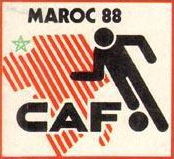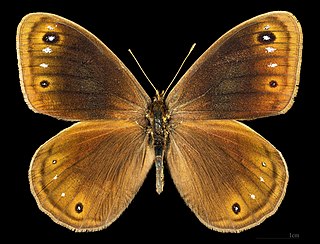
The Maghreb, also known as the Arab Maghreb and Northwest Africa, is the western part of the Arab world. The region comprises western and central North Africa, including Algeria, Libya, Mauritania, Morocco, and Tunisia. The Maghreb also includes the disputed territory of Western Sahara. As of 2018, the region had a population of over 100 million people.

Abd al-Qadir ibn Muhyi al-Din, known as the Emir Abdelkader or Abd al-Qadir al-Hassani al-Jaza'iri, was an Algerian religious and military leader who led a struggle against the French colonial invasion of Algiers in the early 19th century. As an Islamic scholar and Sufi who unexpectedly found himself leading a military campaign, he built up a collection of Algerian tribesmen that for many years successfully held out against one of the most advanced armies in Europe. His consistent regard for what would now be called human rights, especially as regards his Christian opponents, drew widespread admiration, and a crucial intervention to save the Christian community of Damascus from a massacre in 1860 brought honours and awards from around the world. Within Algeria, he was able to unite many Arab and Berber tribes to resist the spread of French colonization. His efforts to unite the country against French invaders led some French authors to describe him as a "modern Jugurtha", and his ability to combine religious and political authority has led to his being acclaimed as the "Saint among the Princes, the Prince among the Saints".

The 1976 African Cup of Nations was the tenth edition of the Africa Cup of Nations, the association football championship of Africa (CAF). It was hosted by Ethiopia. The format of competition changed from 1974: the field of eight teams was still split into two groups of four, but a final stage was introduced with the top two finishers of each of the first stage groups. Morocco won its first championship by topping the final group. Guinea finished second.

The 1988 African Cup of Nations was the 16th edition of the Africa Cup of Nations, the association football championship of Africa (CAF). It was hosted by Morocco, who replaced original host Zambia. Just like in 1986, the field of eight teams was split into two groups of four. The tournament final was held in Casablanca at Stade Mohamed V. Cameroon won its second championship, beating Nigeria in the final 1−0.

The Algerian Cup also known the Republic Cup, is a football competition in Algeria, pitting regional teams against each other. It was established in October 1962, three months after independence, and has been played yearly since then apart from 1990 and 1993.

The culture of North Africa encompasses the customs and traditions of art, architecture, music, literature, lifestyle, philosophy, food, politics and religion that have been practiced and maintained by the numerous ethnic groups of North Africa. North Africa encompasses the northern portion of Africa, including a large portion of the Sahara Desert. The region's commonly defined boundaries include Algeria, Egypt, Libya, Morocco, Tunisia, and Western Sahara, stretching from the Atlantic shores of the Western Sahara in the west, to Egypt's Red Sea coast in the east. The United Nations' definition additionally includes Sudan in the region. The inhabitants of North Africa are roughly divided in a manner corresponding to the principal geographic regions of North Africa: the Maghreb, the Nile valley, and the Sahel.
Abd al-Qadir or Abdulkadir is a male Muslim given name. It is formed from the Arabic words Abd, al- and Qadir. The name means "servant of who can do everything", Al=The. Al-Qādir being one of the names of Allah in the Qur'an, which give rise to the Muslim theophoric names.
Salhi or al-Salhi with the Arabic definite article "al" may refer to:

The French conquest of Algeria took place between 1830 and 1903. In 1827, an argument between Hussein Dey, the ruler of the Regency of Algiers, and the French consul escalated into a blockade, following which the July Monarchy of France invaded and quickly seized Algiers in 1830, and seized other coastal communities. Amid internal political strife in France, decisions were repeatedly taken to retain control of the territory, and additional military forces were brought in over the following years to quell resistance in the interior of the country.

Berberia lambessanus is a species of butterfly in the family Nymphalidae. It is endemic to the North African region, mainly Morocco, Algeria, and Tunisia. It flies in the vast steppes but has a preference for slopes, and the males are easily seen flying in search of a shy female. Usually, females are fertilised as soon as they hatch. The range of Berberia lambessanus overlaps with that of B. abdelkader

Pyronia cecilia, the southern gatekeeper, is a butterfly of Southern Europe and North Africa. It is a member of the subfamily Satyrinae in the family Nymphalidae.
At the 2007 Pan Arab Games, the athletics events were held at the Military Academy Stadium in Cairo, Egypt from 21 to 24 November. A total of 46 events were contested, of which 23 by male and 23 by female athletes. Morocco was the most successful nation in the competition, taking ten gold medals in a 23-medal haul. Sudan and Tunisia won the second and third greatest number of golds with 8 and 7. The host country, Egypt, achieved six gold medals but also shared the joint highest total medal count with Morocco. Seven Games records were beaten at the 2007 edition of the event.

Pyronia is a genus of butterflies from the subfamily Satyrinae in the family Nymphalidae.

Abdelkader Bedrane is an Algerian professional footballer who plays as a defender for Saudi Professional League club Damac and the Algeria national team. He has also appeared for Algeria A' team.
Events from 2020 in Algeria.
The 2020 All Africa Men's and Women's Team Badminton Championships was a continental stage tournament of Thomas and Uber Cups, and also to crown the best men's and women's badminton team in Africa. This tournament was held in Cairo, Egypt between 10 and 13 February 2020.

The Beylik of the West was one of three Beyliks (governorates) of the Regency of Algiers, with the other two being the Beylik of Titteri and the Beylik of Constantine. It was established in 1563, and it was ended during the French conquest.











